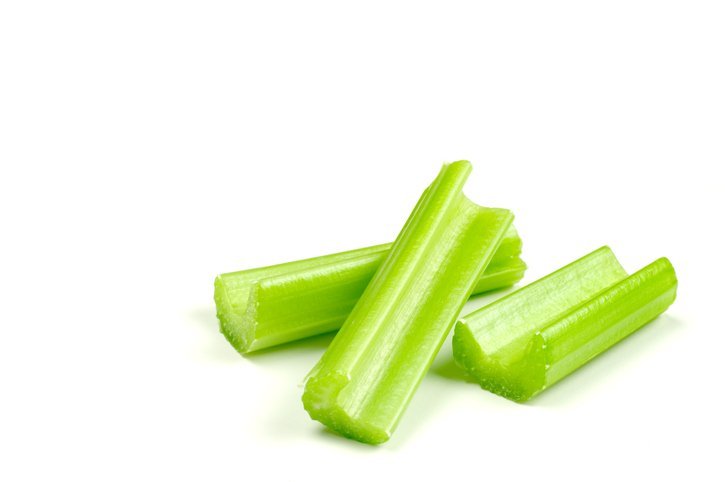Nitrites don’t make it on your grocery list but likely end up in your fridge. They have several roles in foods and have become a necessary component in many of our favorite products. Their most common use in foods is inclusion in cured meats, but they are present in many dietary sources including vegetables and drinking water.
Their use in food preservation is nothing new. The Romans were the first to note the benefits of nitrites as early as 850 B.C. While it remains a key component of many products to this day, its use is misunderstood. Let’s learn more about this food ingredient and what it adds.
What are Nitrites?
When you see “nitrites” listed on a food ingredient statement, it is likely added as sodium or potassium salt of nitrate or nitrite, not too far off from the familiar sodium chloride (table salt). When nitrates are added to a food, it often loses an oxygen molecule and becomes nitrite. In fact, your mouth bacteria achieve this same conversion with high efficiency. For this article, we will be referring to the both as nitrites. When the salt is added to a food, it will appear as “nitrites” on the label, but there are other ways this compound can find its way in a product. Now that we know what it is, the next question is: why add nitrites to food in the first place?
Are They Safe?
Nitrites help make foods safer for us to eat. Nitrites reduce the possible presence of botulism in many products. Botulism is the most potent food toxin and has a lethal dose at the nanogram level. The Food and Drug Administration (FDA) and the United States Department of Agriculture (USDA) take the threat of botulism so seriously that nitrites are required to call a meat product “cured.” Without nitrites, a product must be labeled as “uncured” and “no nitrate or nitrite added.” Nitrites are effective in limiting bacterial growth. They also are effective in preventing long-lasting spores of Clostridium botulinum from coming out of dormancy. While this is the most important role of nitrites in food, they also add fantastic flavor and color to a product.
The Role They Play in Food
Nitrites are essential for flavor development of cured meats. Without their inclusion, many products would taste like salty meat. The role of nitrites in flavor development is still somewhat of a mystery, but many sensory panels have led to several major findings. While nitrites develop aroma and flavor associated with cured meats, they limit undesirable warmed-over flavor and slow down rancidity. These all are paramount in maintaining the palatability of cured meats.
In addition, nitrites keep products’ beautiful red hues. See for yourself in the picture from the Food and Agriculture Organization (FAO) of United Nations. The pork loin on the left is cured (with nitrites) and the one on the right is smoked. The red color of raw meats is the result of the myoglobin pigment interacting with added nitrites. When nitrites are added, they often release a gas called nitric oxide. This gas reacts with the pigment in meat and forms this very stable and beautiful red pigment called nitrosohemochrome. We often subconsciously use color to check the quality of food; I know I do when picking out prosciutto.
What Is Nitrosamine?
For past several years, using nitrites in foods has been more scrutinized. The reason being is that nitrites can form a compound called nitrosamine. In 2010, The International Agency for the Research on Cancer (IARC) classified nitrites as a 2B Carcinogen or “probably carcinogenic.” Therefore, placing nitrites in the category alongside “working the night shift” or “diesel engine exhaust.” IARC bases its classifications primarily on environmental and occupational studies with little regard to dietary exposure. The risk comes from levels prevalent in certain work environments and from smoking, yet the fear has spread to foods.
The context of the source of exposure, use, and use levels must be considered and treated separately from other sources of nitrosamines. While IARC assigned the 2B classification for nitrites, they noted the following in analyzing potential dietary hazards of nitrites: “In most of the studies reviewed, mice or rats that were exposed to nitrite alone in the diet, by gavage or in the drinking-water did not have a higher incidence of tumors compared with untreated controls.”
The FDA has taken this potential exposure into consideration and has limited the amount of nitrite allowed at 200 parts per million (0.02%). On top of that, the food industry limits nitrosamine formation. Erythorbate and ascorbate are two antioxidants prevalent in cured meats that inhibit nitrosamine formation.  If that is not enough to convince you of the safe use of nitrites in cured meats, consider the recent findings on using nitrites reported by the European Food Safety Authority (EFSA). They recently reported that less than five percent of nitrites consumed are added by the food industry. The majority is naturally present.
If that is not enough to convince you of the safe use of nitrites in cured meats, consider the recent findings on using nitrites reported by the European Food Safety Authority (EFSA). They recently reported that less than five percent of nitrites consumed are added by the food industry. The majority is naturally present.
Cured or Uncured?
If you have looked around in the meat aisle at your grocery store, you may have realized ham or bacon labeled as uncured. These products likely have celery juice added. Weird. Why would celery juice be used in bacon? Well, guess which vegetable has a high level of nitrites present? If you guessed celery, you got it! Nitrites are present in many fruits and vegetables, many times far exceeding levels typical of cured meats. Uncured meats are finding a different vehicle for nitrite addition. One potential downside to this is when the product is cured, it has a defined limit of allowable nitrites. When other means like celery juice are being used, the amount could be too low to stop Clostridium botulinum or too high.
After pulling together all the facts about nitrites, their benefits should bolster our confidence in the safety and quality of food products they are added to. While we must remain cognizant of issues arising from high nitrite levels from all food sources, both the FDA and EFSA recognize the importance of nitrites in enhancing food safety. Also, who could turn down even better-tasting bacon?
Additional Resources:
